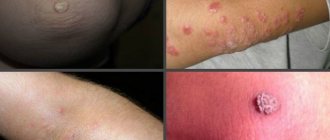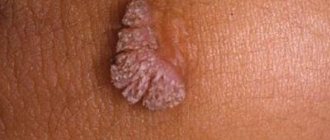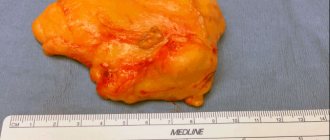When children get sick often, this is a sure sign that the immune system is not working at a sufficient level. To cope not only with the manifestation of the disease itself, but also to take a comprehensive approach to solving the problem that has arisen, you first need to make an appointment with a pediatrician and then an otolaryngologist. His consultation is indispensable when frequent diagnoses of a child at different ages sound like:
- ARVI, acute respiratory infections;
- exacerbation of chronic tonsillitis and adenoiditis;
- otitis;
- laryngitis;
- pharyngitis;
- angina.
Specialists from the first children's medical center in Saratov will help you select a comprehensive and effective treatment, who will conduct diagnostics, prescribe active treatment measures, and in addition select effective methods of prevention.
Laryngeal papilloma. Symptoms
Symptomatically, laryngeal papillomatosis can be represented by hoarseness, chronic cough, difficulty breathing, difficulty swallowing, recurring respiratory infections, and growth retardation in children. The presence of certain symptoms depends on the location of the papillomas. In children, the symptoms are more pronounced, since they have a significantly faster growth of papillomas, unlike adults. This can lead to situations in which emergency intervention is required for life-saving reasons, despite the histologically benign course of the disease. The prognosis is more favorable in terms of remission if the disease manifests itself in adulthood. The exception is the presence of HPV type 11 and the duration of the disease for more than 10 years.
Clinical picture
One of the main symptoms of laryngopharyngeal papillomatosis is hoarseness, which can reach aphonia (lack of a sonorous voice, when only whispered speech is preserved). In addition, with this disease there is a gradual difficulty breathing, which is more common in childhood. Papilloma grows unevenly, with periods of increased growth followed by fairly smooth, quiet periods. However, even such a quiet period can lead to suffocation, which occurs as a result of obstruction (clogging) of the larynx by a tumor process.
Friends! Timely and correct treatment will ensure you a speedy recovery!
Make an appointment right now!
Call us by phone or use the feedback form
Sign up
Causes of laryngeal papilloma. Who is at risk?
The etiological factor is human papillomavirus (HPV), in most cases types 6 and 11. The latter leads to a more severe course of the disease. Less commonly, laryngeal papillomatosis can be caused by HPV types 16 and 18, which are viruses with a high risk of developing malignant neoplasms. However, the presence of HPV in the human respiratory tract does not always lead to papillomatosis. Determining factors can be immunodeficiency states and chronic infections. Concomitant infection with the herpes simplex virus and the Epstein-Barr virus contribute to a more aggressive course of the disease.
Early stages of infection
Juvenile formations on the tonsils have different causes, but if there is a conclusion that the child has been diagnosed with the papilloma virus, this requires parents to constantly monitor and pay attention to their health status. Specialists from the first children's medical center in Saratov will help you decide on the most effective preventive and therapeutic measures. If your child often coughs for no apparent reason, or says that he has an uncomfortable sensation of the presence of a foreign object in his throat, immediately sign up for a consultation and visit a specialist who will select the most appropriate and effective treatment.
Laser removal of papilloma in the throat. Progress in medicine helps.
The main thing is to keep up with it and take advantage of all the new opportunities. In the treatment of papillomatosis, these include the use of CO2 laser, narrow-spectrum endoscopy and certain antiviral drugs. But there is one prerequisite to achieve the best result - everything must be performed by a highly qualified surgeon with extensive experience in treating laryngeal papillomatosis. This is extremely important to understand.
Papillomatosis is characterized by the formation of exophytic growths that affect the mucous membrane of various parts of the larynx and underlying parts of the respiratory tract.
How dangerous is this?
Often papillomas on the tonsils are benign in nature, but at any age it is not worth the risk, and it is better to initially seek professional advice to eliminate all risks. Medical specialists identify the following among the main factors provoking the appearance of education:
- heredity;
- violation of metabolic processes;
- frequent colds and their complex course.
What color are the formations?
Papillomas blend in with the color of the mucous membrane of the throat, but sometimes they can change their pigmentation, becoming light pink or dark brown. Initially, one formation may appear, which is similar in size to a pea or the head of a pin. Over time, the number of formations can increase significantly and the lesion will look like a cauliflower with multiple papillomas. Sometimes the appearance process can be accompanied by inflammation.
More than 10 years without recurrence of papillomatosis.
All patients treated by Professor Roberto Pujedo have not experienced a relapse of the disease for more than ten years .
“A comprehensive approach is a key success factor. Starting with detailed diagnostics using cutting-edge technologies, ending with careful monitoring in the postoperative period.”
Along with the expertly performed complete removal of papillomas, Professor Roberto Pujedo carries out targeted administration of antiviral drugs into the mucous membrane of the affected areas of the larynx.
Reliable source:
Enhanced contact endoscopy (ECE) in head and neck surgery
Many patients talk about dozens of surgeries in their history and endless relapses. It seems that it is impossible to cope with this disease. Each time the voice becomes worse, numerous scars form in the larynx.
Now this is history!
How does the tumor feel?
Sometimes the patient does not feel any changes at all due to its small size, since there are no nerve endings in the papilloma, but as the formation grows, symptoms such as awkwardness when swallowing, a feeling of a foreign body in the throat, and cough appear. Similar sensations occur during pharyngitis or laryngitis, and in order to exclude the appearance of formations, it is necessary to urgently make an appointment with a doctor. With a child, the situation is complicated by the fact that he cannot accurately describe his sensations, and it is also difficult for him to carefully examine the oral cavity and pharynx on his own.
Diagnosis, treatment and prevention of recurrence of papillomas is carried out only by a medical specialist under the careful supervision of all stages and the obligatory condition of checking the oncogenic nature.
Possible methods of treating laryngeal papillomas.
Careful removal of papillomatous growths under a microscope and using a CO2 laser is fundamental. However, removal must be carried out exclusively within the mucous membrane, where the formations are located. Moreover, the normal mucosa must be preserved. The surgeon must be experienced and thoroughly understand the mechanism of papillomas formation. Otherwise, gross surgical intervention leads to loss of voice, severe scarring, and stenosis.
Studies have shown that intraepithelial administration of antiviral drugs can reduce the number of operations to remove papillomas, leading to partial regression of the growth of formations. Also, local administration of an antiviral drug avoids systemic toxicity.
The mechanism of action of interferons in laryngeal papillomatosis is unknown, however, they are often used as an additional treatment. Interferons are naturally produced by white blood cells in response to various stimuli, including viral infection. They bind to specific cell membrane receptors and change metabolism, providing antiviral, antiproliferative and immunomodulatory effects. The clinical effectiveness of interferons in the treatment of laryngeal papillomatosis is ambiguous and controversial. The main limitation for their use are side effects when administered intravenously: increased levels of transaminases in the blood, leukopenia, thrombocytopenia. Patients may experience weakness, nausea, fever, arthralgia, and headache.
Indol-3-carbinol can be extracted from cruciferous plants (broccoli, cabbage). In vitro studies have shown promising results on the growth of papillomas by influencing estrogen metabolism. When administered orally to a small number of pediatric patients, no adverse effects were observed. However, the clinical effectiveness of this drug remains in doubt.
Measles, mumps, rubella (MMR) vaccine . A prospective randomized controlled trial showed that intraepithelial administration of MMR vaccine could prolong the period of remission after surgical treatment.
HspE7. A new vaccine targeting oncogenic HPV types has also been used to successfully control relapses of laryngeal papillomatosis.
The presence of GERD was associated with an increased likelihood of complications. The irritating effect on the mucous membrane can act as a trigger for the proliferation and spread of papillomatous growths. Studies have shown that the use of drugs to treat GERD promotes better control of laryngeal papillomatosis and prolongs remission.
According to a Cochrane review, photodynamic therapy has not been shown to be effective in the treatment of laryngeal papillomatosis.
Watch the video BEFORE/AFTER surgery to remove laryngeal papillomatosis
Relapse-free postoperative follow-up for a year. Endoscopy in NBI mode. Credit: Professor Roberto Pujedo.
Look at the photos BEFORE/AFTER the operation by Prof. Roberto Pugedu
Photos “before” and “after” surgery to remove laryngeal papillomatosis. Credit: Professor Roberto Pujedo.
Move the slider to see the difference.
How is tonsil mass treated?
Traditionally, in the fight against otitis media or exacerbation of chronic tonsillitis, antibiotics and concomitant therapy are prescribed to minimize the negative impact on the gastrointestinal tract. If formations on the tonsils are confirmed and their nature is clarified, treatment is prescribed by a specialist. It is forbidden to rip off or burn papillomas yourself.
An experienced otolaryngologist, as well as with the necessary consultation of a professional surgeon, prescribe the most effective treatment methods, including:
- removal of tumors with laser;
- radio wave excision;
- freezing and removing formations using cold;
- electrocoagulation, when the papilloma is removed using current.
The method is selected taking into account:
- degree of damage;
- age;
- general condition of the body;
- individual reactions.
The papilloma virus cannot be cured, but everything can be done to block its manifestation.
Make an appointment with a surgeon
Choose a doctor
How to get rid of papillomas?
If the growths on your tongue are present in small quantities and are small in size, then the process of removing such growths is quite simple. But this does not mean that you can remove the papilloma yourself, using such “effective folk remedies” as cauterization, cutting the “leg” of the tumor with scissors, etc. To remove the growth, you should contact a professional medical institution.
Methods for removing tumors:
- Excision of papillomas with a scalpel or electric knife. This affects not only the growth itself along with the stem, but also part of the healthy tissue around it.
- Laser removal of tumors.
- By using a tool such as a conchotome, shaped like a wire cutter. After removing the papilloma with such a device, galvanoacoustics is performed (cauterization of the localization of the growth using a platinum wire).
Diagnostics
The endoscopic picture characteristic of this disease and histological examination of biopsy materials allow us to confidently make the correct diagnosis.
At an early stage, laryngeal papilloma must be distinguished from diseases such as: laryngeal fibroma, laryngeal retention cyst, vocal laryngeal nodules, diffuse polyposis formations, laryngeal angioma, hyperplastic laryngeal nodules, contact granuloma.
What is the danger of developing growths on the tongue?
Often a person does not even suspect that HPV is present in his body, which manifests itself in the form of papillomas. If the growth is localized on the inside of the tongue, closer to the palate, then the patient may not notice the growth. And then the doctor accidentally finds the papilloma during an examination of the patient’s oral cavity.
Papillomas that are located on the tip of the tongue are less common, but they are always noticeable. Such growths interfere with talking and eating, so people with such growths most often seek help from a medical facility.
What else can you expect from a growth on the tongue, besides discomfort:
- Papilloma is a benign neoplasm that in itself does not pose a threat to human health. But in 1.2% of cases, malignancy of such processes occurs, i.e. The tumor goes from benign to malignant.
- The oral cavity is an extremely undesirable place for papillomas to be found. If in other parts of the body growths can “live” quietly, and the doctor will not recommend removing a tumor that does not pose a threat, then papillomas on the tongue are often injured. This can lead to inflammation.
Which people are susceptible to papillomas?
Based on the information we provided above, we can distinguish several “risk groups”, people in which are susceptible to the development of growths and neoplasms on the tongue and body.
The appearance of a process on the tongue is possible:
- In a situation where a person has reduced immunity as a result of stress, the presence of parasites in the body or ongoing inflammatory processes.
- If a patient with a growth in the mouth suffers from autoimmune diseases.
- In a person with HIV infection.
- In people who are promiscuous.
- In the event that a person has bad habits. Smoking and drinking alcohol especially contribute to the appearance of neoplasms in the form of growths on the tongue.
- If there was any trauma to the tongue or damage to the mucous membrane occurs systematically.
How and why we become infected with HPV:
- In most cases, HPV is transmitted through sexual contact.
- Infection is possible through household means, through touch, while staying in public places, such as baths, saunas, swimming pools, toilets or gyms.
- Self-infection, such as when you accidentally cut yourself while shaving.
- There are known cases of infection of a newborn during passage through the birth canal.
The danger of HPV lies in the fact that, once it enters the human body, it can remain in an inactive state for a long time, but then suddenly (during stress, a cold or other immune system failure) make itself felt in the form of the appearance of tumors on the body and growths on the tongue.










